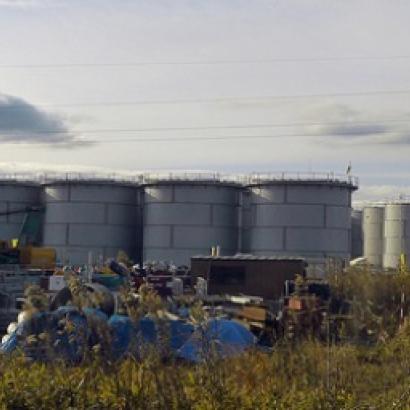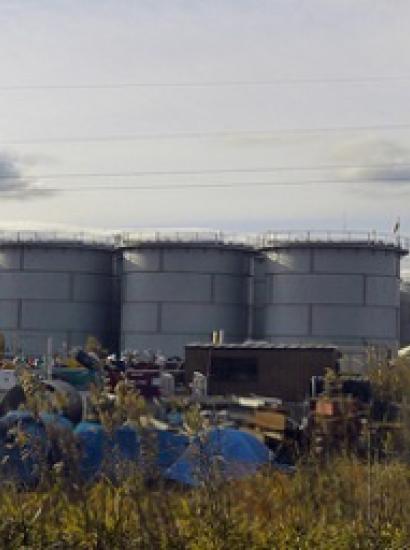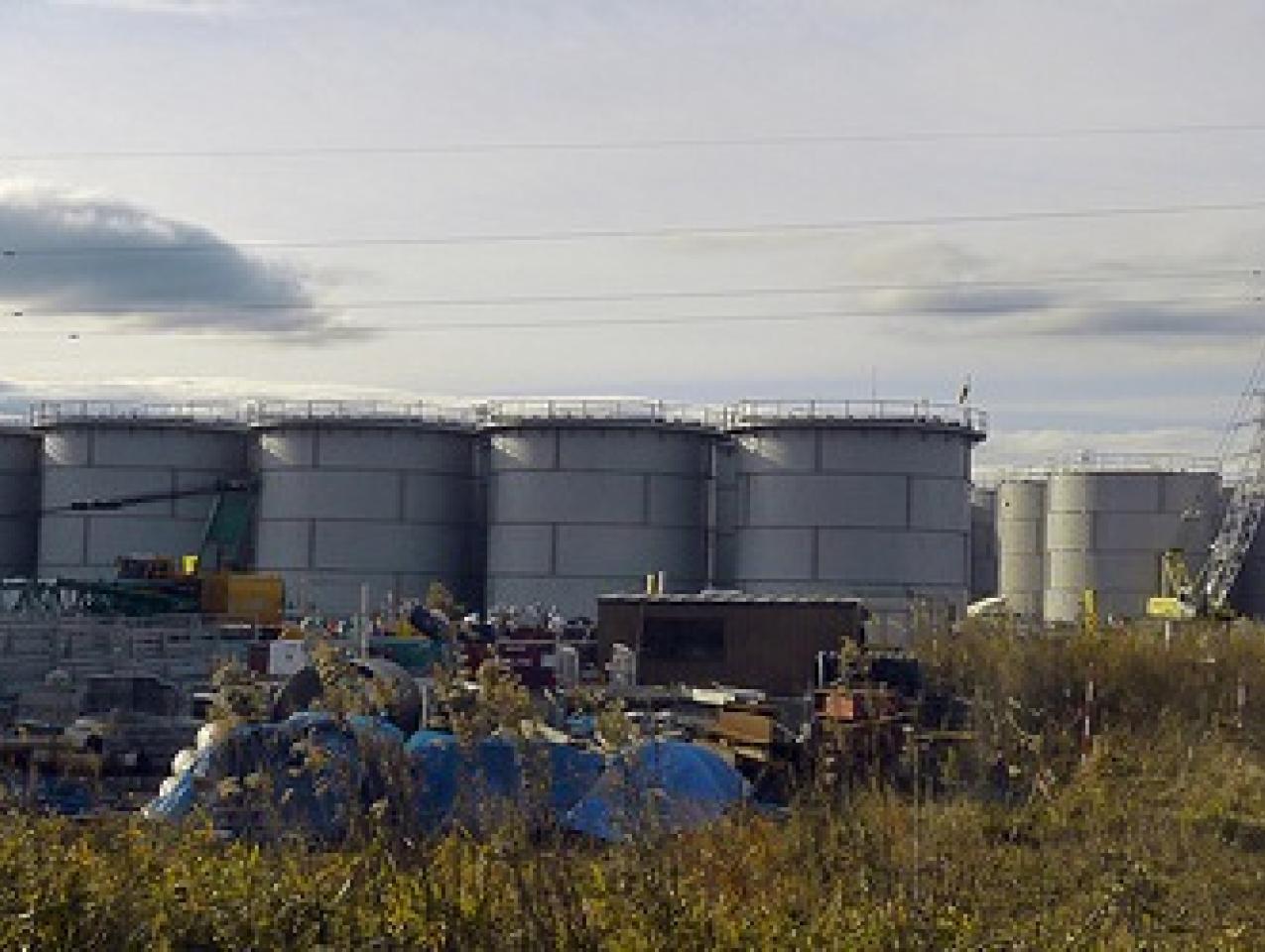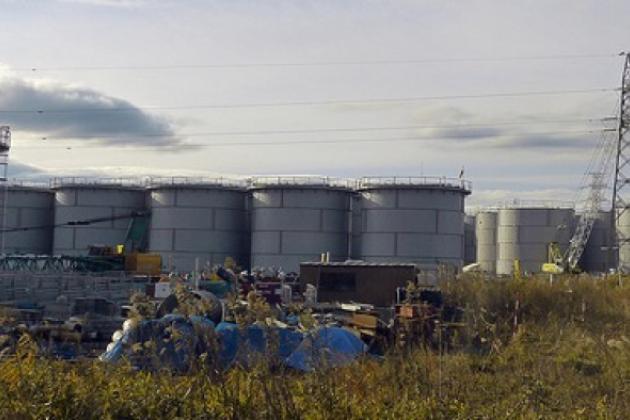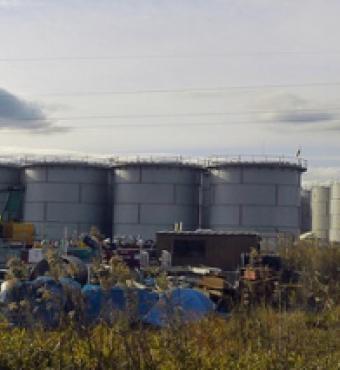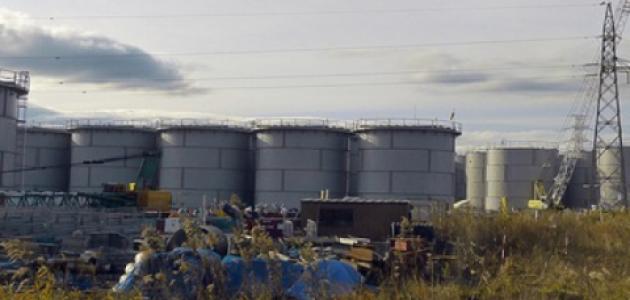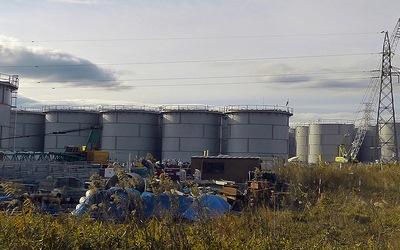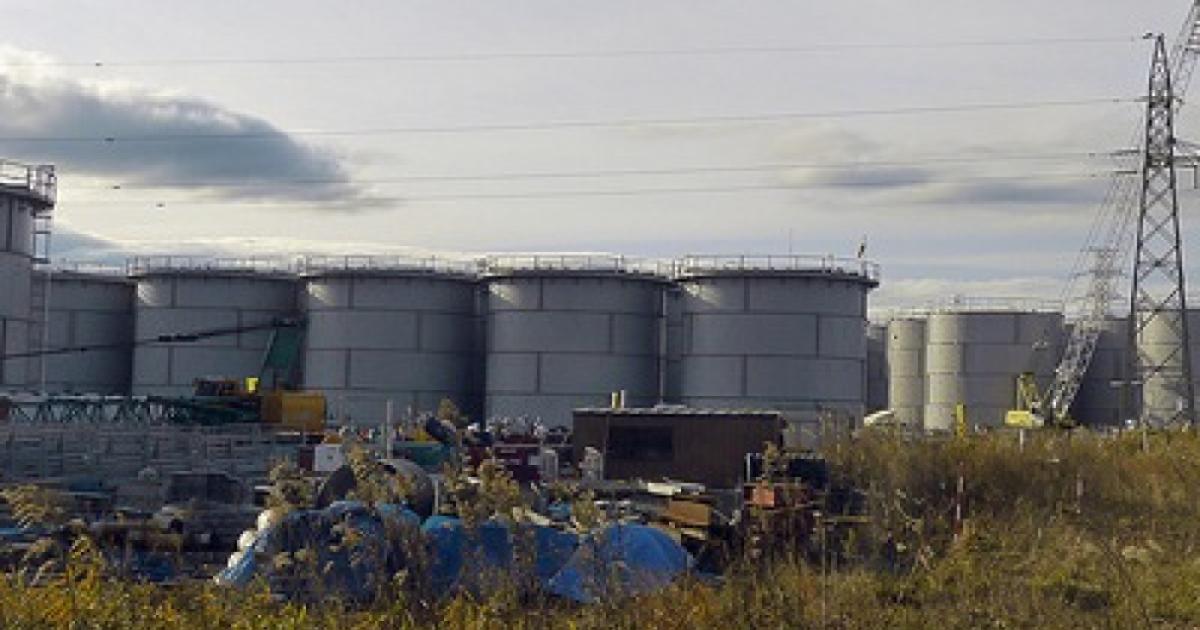- Law & Policy
- Civil Rights & Race
When the worst earthquake in Japan’s history pulverized its northern coastline in 2011, walls of black saltwater from the deep Pacific surged over four of six nuclear reactors located on the Fukushima coast. Though they were supposedly designed to withstand the worst quake imaginable along the Ring of Fire, the reactors quickly succumbed to the natural disaster, breaking like toys. To be precise, three reactors had outright meltdowns or, more correctly, melt-throughs. One, Reactor No. 4, broke beyond repair and posed further catastrophe. Two others simply stopped dead. Within hours, one of the melt-throughs exploded, spewing lethal radioactive waste into the air, soil, underground water veins and, steadily, into the Pacific. Some eighteen thousand and five hundred souls died that cold March day. Many of the dead remain missing even now.
Three years on, a dark threat of further tragedy yet hangs over Fukushima. On the fourth floor of Reactor No. 4—the reactor that exploded on the first day of the earthquake—1,331 spent fuel rods remain stored in cooling water in a large steel tank. The tank, jolted by the quake, tilts to about 30 degrees. The six reactors at Fukushima have produced 14,225 spent fuel rods, all of which are stored in the same way at the reactor sites. To underscore the lethal potential of this situation, a single exposed spent fuel rod, 4 meters-long and 1 centimeter in diameter, will kill a man in four seconds.
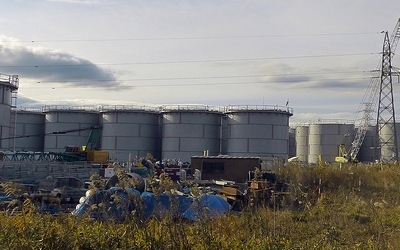
Photo credit: IAEA
Why were the spent rods—so many of them—stored on top of the reactors? Who at General Electric was responsible for that design innovation? Was it conceived for expediency, to save money, or from an attitude of utter hubris against the force of nature?
Nobody in charge of the meltdowns wants to talk about the tank that is brimming with an unfathomable nightmare. Miraculously, the tank has not yet toppled. But the next big earthquake, or the effect of metal fatigue, might end life for everything around. If it were to topple, the greater Tokyo metropolitan area, with adjacent large cities like Yokohama and a total population of 33 million, could become a vast wasteland with no willing inhabitants. An exodus of panicked people would ensue from an island archipelago that is smaller than the State of California.
Three years have passed since the comprehensive meltdown, which continues to contaminate everything it touches. During all that time, invisible odorless particles with unspeakable consequences have been descending over the region every time rain or snow falls. On February 8, 2014, Tokyo experienced its heaviest snowfall in forty-five years.
Residents around Fukushima long ago deserted their houses, farms and factories, leaving behind pet dogs and cats, and domestic animals such as horses, cows, pigs, and chickens. They are feral now, freely roaming the no-man’s land, and multiplying. Tenacious bamboo forests have claimed tiers of fertile rice paddies and graceful orchards. The senior citizens who escaped to the mountains continue to die of diseases and stresses related to their dislocation and the medical effects of the meltdown. The newly dead number 14,000, our government says. In all, 160,000 residents fled the region and are not allowed to return.
The horrific scene in Fukushima, to which no end can be envisioned, rarely shows up in the nation’s mass media. Long after the disaster, there persisted an eerie pall of deliberate denial regarding anything related to Fukushima. The Japanese took to reading The New York Times, The Wall Street Journal or The Guardian to assess the magnitude of their disaster. How many Japanese can read such high-level English? And why should they be required to, when Japan has one of the most advanced mass media systems in the world? We were forced to wonder: does our media collaborate too comfortably with Tokyo Electric and the Abe government, which promotes nuclear power, and hence fail to publish any alarming news about the catastrophe? The answer to this rhetorical question would seem self-evident.
Only relatively recently, as if the nation’s pent-up emotional stress could no longer be suppressed, a fitful spurt of appalling news started to be broadcast in Japan itself—revelations like the startling confession by the Tokyo Electric Company that the meltdowns have been leaking toxic water from the first day of the disaster. This was followed by an explanation as to why the company would release such damning information so sluggishly: the toxin had been buried deep in the hidden lochs of water around the reactors. Is the company truly so incompetent that it wasn’t immediately aware of this fact, or just disturbingly skillful at hiding the obvious? Just as a bamboo sieve fails to retain water, control over the natural flow of unwelcome news has proved ineffective.
Toxic Water Disposal
Neither the Japanese government nor Tokyo Electric knows how to dispose of the radioactive water, which presently amounts to about 500,000 tons. That is 400 tons per day, every day. This water was used to cool the meltdowns. Worse, underground water veins that originate from the nearby mountain range, amounting to about 1,000 tons a day, run beneath the meltdown reactors and must be pumped and stored before the water runs amok in rivers and the Pacific.
Some of the toxic water is stored in an underground pool, which is overflowing, and the rest is in large aboveground steel tanks at the Fukushima site. The seams of these special tanks are not welded but bolted. Why are they not welded? In August, 2013 the tank maker explained that he had to make them “quickly and cheaply, because Tokyo Electric told me to hurry up, and to not spend too much money.”
Some tanks have started leaking due to the high temperature of the water itself, which melts the seams and, according to Tokyo Electric, because of the unusually hot summer weather last year. As the cooling of the three complete meltdowns requires a constant flow of vast amounts of water, more tanks are needed. Fukushima urgently requires additional storage space or, better yet, larger tanks for another 450,000 tons in the next two years. The meltdowns need to be kept cool for the next 20 years, at least. Since enough storage space for the tanks is not available around the Fukushima reactors, will the government exercise eminent domain to take private land on behalf of Tokyo Electric? If the government buys or takes private property, the Fukushima residents may revolt.
Tokyo Electric has another, more primitive problem: a horde of hungry rats. Last year (2013), electricity vital for pumping water to cool the meltdown suddenly stopped, resulting in panic within Fukushima. A frantic search for the cause found a shoddy wooden electric circuit box containing a tangle of wires. The box had been exigently nailed on a wooden pole to reroute electricity to the all-important cooling pumps. A rat had gnawed the coating of the wires and was electrocuted. The rat became big news in March of 2013. Then, a month later, in a different wooden box, another suicidal rat bit into wire coating and stopped the flow of vital electricity once again.
The situation with the toxic water is not yet hopeless, because the Nuclear Regulation Authority came up with a solution: “Not every drop of the contaminated water is imminently dangerous to our health, so the less radioactive water should and must be dumped offshore, into the Pacific Ocean.” At the same time, intentionally or not, the toxic water has been leaking into the Pacific from the first day of the meltdown, a fact that Tokyo Electric denied until recently
As serious as this situation is, it is not as frightening as a discovery at one testing well near the Reactor 3 meltdown. On July 11, 2013, Tokyo Electric measured at the bottom of the 30-meter well a shocking concentration of cesium: one million times more lethal than the Nuclear Regulation Authority accepts as safe.
The radioactive wastewater lives for several hundred years. Plutonium, abundantly produced by the reactors, remains deadly for 25,000 years. Even decommissioning the Fukushima meltdowns would take more than 50 years and more than 30 billion US dollars—an optimistic estimate. But the Japanese people, kept misinformed about the true potential danger of Fukushima, have developed a case of collective amnesia, a coping mechanism to help them process their profound sense of resignation about a dark national future.
That amnesia was momentarily shattered on September 27, 2013, when the president of Tokyo Electric blurted out in front of the Diet (Parliament) committee investigating Fukushima that, “We do not know where the source of the contaminant is located and we have not yet been successful at containing it.” His open admission made headlines.
No One Is Dead
Prominent politicians, never missing an occasion to chime in, lecture us Japanese citizens about our overwrought anxiety. For instance, Senator Sanae Takaichi, Prime Minister Shinzo Abe’s close colleague, smilingly declared in a public speech, “No one has yet died of radioactive disease at Fukushima.” To which smug observation one can only respond: no, not yet. She meant that nobody in Fukushima died instantly from direct radiation, as seen in the explosions over Hiroshima and Nagasaki. Do a few of us have to die within a year or two to prove that relentless radiation is lethal? Her hidden agenda was to promote the restarting of the nation’s remaining fifty reactors, which have been under “thorough inspection” by the government. Her too casual assessment of the risks did not fail to unnerve a populace haunted by radioactive ghosts, and her tone-deafness threatened her political career. Advised by her superiors, including the Prime Minister, she apologized and said she would retract all of her previous statements regarding nuclear policies.
Prime Minister Abe, unfazed by his subordinate’s blunder, went abroad to Istanbul, Turkey to sell Japan’s nuclear reactors. He is well aware that Turkey is one of the world’s countries most prone to disastrous earthquakes. To make his case he said, “We have learned a precious lesson from Fukushima. Because of it, with confidence, we would like to export Japan’s advanced nuclear technology to the people of Turkey, and if anything goes wrong, Japan will be responsible for it and take care of it.”
We taxpayers, however, worry in polite silence and long to hear from our favorite premier all about the precious lessons we apparently failed to deduce from our media and leadership. It could not be that he was mendacious just to sell expensive reactor technology, could it? After Turkey, he traveled to Southeast Asian countries, including Vietnam, Thailand, India, and Indonesia to sell Japan’s nuclear reactors. Furthermore, our ever-confident prime minister declared before the Olympics Site Selection Committee, “Japan has successfully put the Fukushima meltdowns under control, so please choose Tokyo for the 2020 Summer Olympics.” He was persuasive, and Tokyo won the honor. Meanwhile, the reality at Fukushima stares us down more menacingly than ever, because we have no space left in which to maneuver.
Nasty Strontium
The Japanese are aware that they are walking “On The Cesium Road.” (Hoover Digest, 2012, No.2) But that’s only part of the story. Tokyo Electric Company has just discovered concentrated amounts of strontium in the water that overflowed from the tanks. This discovery was made on September 5, 2013, two years and six months after the earthquake. Why was there an overflow? “Too much rainfall,” the Company explained. Blaming nature for spillage from the steel tanks failed to convince the public but succeeded in embarrassing a government that still promotes nuclear energy.
How much strontium did the Company discover? Thirty times more than the Nuclear Regulation Authority says is “safe.” But this Authority is a tolerant bunch when it comes to radioactive health hazards, and simply sets the “dangerous level” very high. By international standards, the Japanese in the region have been exposed to a strontium level several hundred times higher than that considered safe.
In fact, every time and in every place that the Company digs a testing well to measure cesium and strontium, it discovers far more concentration than it hoped to find. Now, the Company and the government have come up with a very expensive technological innovation: freeze the most contaminated zone surrounding the meltdowns within a one-mile radius. The frozen circle, 25-feet deep, is expected to stop the so-far unstoppable flood of wastewater into the Pacific Ocean. They would like to complete it in 2015 and have already started constructing the ice wall to transform the region into a little Siberian tundra. We joke about it, but it is no laughing matter; the physics of water may well not honor such a defensive wall. And who is paying for these massive and unrelenting blunders? There has been absolutely no talk of responsibility or accountability.
Strontium, if digested or inhaled, accumulates within our bodies, mainly in our bones and teeth. The eventual consequences will be especially terrible for young boys and girls, babies and pregnant women. Cesium and strontium show up in mother’s milk. Cesium is reported to weaken heart muscles and may cause heart attacks. Fukushima already reports 1.6 times more heart attacks than before the accidents.
No effective cleanup is in sight. The only evidence we see is that Tokyo Electric has hired many unemployed men above 40 years of age, to wash roofs and gardens of contaminated towns and villages, and scrape off the topsoil of school yards, including baseball and soccer fields, as if exfoliating the contaminated skin of the earth. Mountains and forests remain unwashed. These men who dare to work within the lethal circle get paid well, an equivalent of $300 US dollars for the maximum three-hour workday allowed by the nation’s law. They work for three months only.
Why an age limit? Young unemployed men will have a longer future to be productive and possibly have children. Are the older men, overexposed to high radiation, exhibiting signs of DNA mutation? Recently the age limit has been dropped, perhaps because the pool of workers above 40 years old has dried up. Either way, a steady march of manual laborers with water hoses and scrapers will not conquer a deadly high tech monster. Those men who worked close to the meltdowns number around 25,000. The government and Tokyo Electric have a standing offer for them to take free leukemia and other cancer tests, and avail themselves of free operations and other medical attention as the need arises.
As if the Japanese people need an additional science lesson, the Vice Minister of the Education and Science Ministry (Yoshitaka Sakurada) said during a reception party for himself on October 6, 2013: “Nobody can live in Fukushima ever again, so it is perfectly appropriate to dump all the unburnable radioactive trash and ashes of the burnable right there.” The 2013 White Paper on the Environment, prepared by the Abe Cabinet, has deleted the phrase, “the most urgent and critical environmental issue is radioactive contamination,” which had been displayed conspicuously in The 2012 White Paper on the Environment.
For the Japanese who worry about radioactivity, Fukushima has proved itself a chilling education about the incompetence, irresponsibility and arrogance of the people in charge of repairing and cleaning it up. Worse, those in charge have been wasting vast sums of tax money, prolonging the suffering of those directly affected by the meltdown, and indirectly tarnishing Japan’s reputation worldwide. The OECD (Organization for Economic Cooperation and Development, Paris) announced on October 8, 2013 that among its 24 member nations of advanced economies, Japan is the nation with the “smartest” workers. Finland and Germany are second and third. One wonders, how would the OECD compare the quality of leadership by presidents and premiers among its members?
While the Japanese people search for the “precious lesson of Fukushima” that only the Prime Minister and his close circle appear to have learned, the Pacific Rim nations should worry about the potential catastrophe of the spent fuel rods, teetering on the edge of the Pacific Far East.








